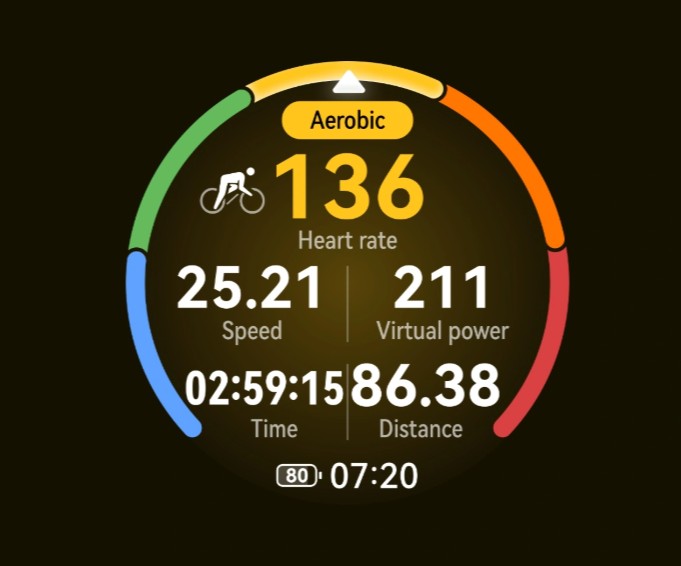Smartwatches are no longer simply step counters; they are fully functional fitness partners. Whether you're running or lifting weights, the appropriate wristwatch may help you exercise harder, track your progress, and recuperate more effectively. With precise sensors and customized settings, these devices cater to both runners and gym goers. Choosing the proper one is determined by the parameters that are most important to you: distance, heart rate, repetitions, and rest. A decent smartwatch may assist in improving form, establishing consistency, and preventing burnout. This tutorial covers the most important features and capabilities, including GPS tracking and HIIT workout support. If you're serious about getting results, your wrist tech should work just as hard as you.

What Features Should You Look For?
GPS, Pace & Distance Tracking
Runners rely on precise distance and speed measurements to assess performance and schedule sessions. Look for a smartwatch with built-in GPS rather than one that relies on your phone. GPS-enabled watches accurately monitor outdoor runs, indicating the pace per mile, total distance, and elevation gain in real time. Some versions additionally have multi-GNSS compatibility for speedier satellite lock-on in challenging locations such as woods or cities. Pacing features assist in maintaining the desired speed, and auto-pause recognizes breaks. Whether you're beginning to run or preparing for a race, exact distance and pace statistics will help you stay consistent and confidently evaluate your progress. These technologies convert casual runs into measured training sessions.
Heart Rate, Training Zones & Recovery Metrics
Heart rate data indicates how hard your body works when training. Watches with optical sensors monitor your heart rate and assign you to one of three training zones: fat burn, aerobic, or anaerobic. This allows you to customize your effort to your fitness objectives, whether you're aiming to increase endurance or burn more calories. Some methods measure heart rate variability (HRV) to determine stress and preparedness. Recovery measures indicate how long you should recover before your next session, which helps prevent overtraining. More modern smartwatches give real-time assessments of VO2 max and performance conditions. Monitoring heart rate and recovery simultaneously enables more efficient training, greater performance, and general wellness without depending on guessing.
Durability, Battery Life & Comfort
A smartwatch should be durable enough to survive perspiration, impact, and extended wear. Choose one with a long-lasting build quality—scratch-resistant glass, shock-proof casing, and water resistance (at least 5ATM) for workouts in all weather. Battery life varies, but experienced runners and gymgoers should search for watches that can last five to ten days in regular mode or at least 8-20 hours with GPS enabled. For those with hectic schedules, quick-charge solutions come in handy. Comfort is also important—a lightweight watch with breathable bands reduces discomfort during lengthy runs or heavy lifting. A robust but wearable wristwatch allows you to work out harder, longer, and more frequently without having to worry about charging or being uncomfortable.

How Does a Smartwatch Benefit Gym Workouts as Well as Running?
Strength-Training Mode, Reps & Sets Tracking
Many smartwatches now have strength-training modes that identify and count repetitions during workouts such as squats, presses, and curls. Some versions use motion sensors to automatically determine rest times and even distinguish movement types. Rather than manually tracking sets, this helps lifters stay focused. Vibration alert watches tell you when it's time to exercise or rest, and progress charts show you how much strength you've gained over time. Based on previous workouts, paired applications provide weight and recuperation options. Whether you exercise at home or at a commercial gym, organized, data-driven feedback improves form, fosters consistency, and holds you responsible without requiring you to write anything down between sets.
Activity Switching, Circuit Training & HIIT Compatibility
Smartwatches with multi-sport capability enable easy switching between activity kinds, making them suitable for circuit training or HIIT. You may switch from treadmill sprints to kettlebell swings without restarting the workout. Auto-recognition features detect changes in activity and update measurements accordingly. Fast-paced routines are supported by built-in timers, vibration signals, and custom interval sets, which allow you to stay focused without looking at the clock. Some watches indicate heart rate zones in real time during HIIT, ensuring that you are working at the appropriate intensity. Curious users can also explore features that explain training concepts, such as what is a tempo run is, to better understand their workout structure. Circuit athletes benefit from lap tracking and on-screen cues for transitions. By supporting hybrid workouts, these smartwatches adapt to high-energy training styles and let you track every movement efficiently from warm-up to cooldown.
Recovery, Sleep Tracking & Cross-Training Insights
Smartwatches allow you to recuperate as efficiently as you work out. Recovery monitoring calculates how long it takes your body to recover from strenuous exercises using heart rate variability, sleep quality, and recent activity. Sleep monitoring measures length, phases, and restfulness to identify bad sleep patterns or sleep debt. Cross-training elements such as yoga, cycling, or mobility session tracking aid both runners and gymgoers in preventing overuse problems. The finest smartwatches provide weekly load summaries, stress tracking, and daily readiness scores to help determine exercise intensity. With these insights, you'll know when to push harder and when to take a breather, allowing you to make progress without burning out or plateauing.
Conclusion
A smartwatch improves running and gym performance by displaying real-time data on your wrist. GPS, pace monitoring, and heart rate zones are all features that assist runners in accurately assessing effort and increasing endurance. Strength training modes, rep counting, and HIIT timers are useful tools for gym enthusiasts who want to make their exercises more effective and structured. With recuperation measurements, sleep tracking, and cross-training assistance, you have a gadget that supports balanced improvement. Choosing the proper model requires taking into account your training style, comfort demands, and data objectives. Whether you're just starting out with jogging or fine-tuning your strength regimen, a wristwatch may help you exercise smarter, recover faster, and stay consistent.
